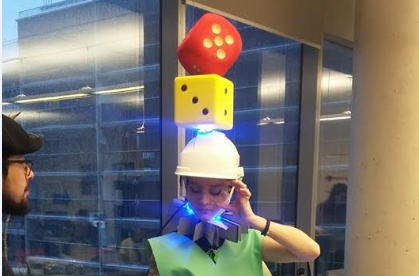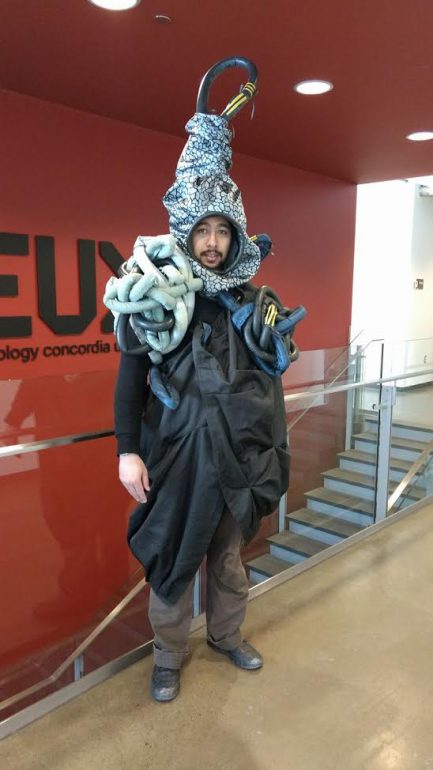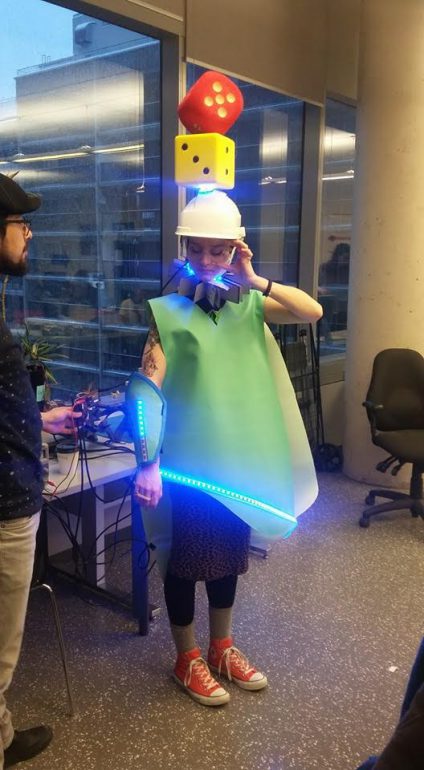

In development since 2015, at the core of Avatrix is the idea that that epitome of the virtual, the avatar, becomes flesh. At the beginning of the game, four participants divide into two teams and must decide who is the Player and who the Avatar in each team. Through their choices each teams commits, for the duration of the game, to the strange, dramatically asymmetric but potentially deeply complementary relationship between Avatar and Player. A battle is then waged by the competing Players through the augmented costumes of their Avatars. The Avatars literally display great powers of attack and defense but cannot activate or control them. They have, however, one profoundly non-linear power of their own. They control a biofeedback system – but its successful use requires them to find and maintain a deep stillness that, perhaps ironically, intensifies the impression of their passivity.

In fact, the Avatar’s ability to focus and control the biofeedback is absolutely essential to the Player’s ability to win the game. The biofeedback determines which Player wins the skill test that decides the attacker for each round. If the avatars successfully focus after the skill test, they also feed a Special Power for their Player which, although it can only be used once, will have a very significant effect on the game.
The game plays with ideas of control and agency, of passivity versus action and of linear versus non-linear control. In the end, an apparently passive agent provides very powerful support to the visibly active agent -although the significance of this support is related to how difficult it is to control the nonlinear system. Avatrix asks; what does agency look like? What is the power of stillness and interiority? How does surface relate to depth?
